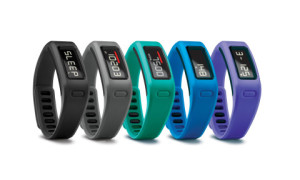 Business Insider is carrying a very thoughtful and provocative article by Runkeeper CEO Jason Jacobs. Jacobs says that standalone fitness trackers like the Nike FuelBand, the Fitbit Force, or the Misfit Shine, are fads — and that the future belongs to smartphones and software.
Business Insider is carrying a very thoughtful and provocative article by Runkeeper CEO Jason Jacobs. Jacobs says that standalone fitness trackers like the Nike FuelBand, the Fitbit Force, or the Misfit Shine, are fads — and that the future belongs to smartphones and software.
The argument — that consumers consistently bias toward simplicity and not complexity — is persuasive. HiFi components yielded to all-on-one systems. Separate cellphones and MP3 players were steamrolled by smartphones. Set-top boxes like Apple TV and Roku are competing with and may be subsumed by “smart TVs.” And yet…
Jacobs’s theory depends on there being a single device with super capabilities that no one leaves home without. Misfit CEO Sonny Vu talks about devices like that, too, and (as he told the recent Smart Fabrics conference) wants to build one. Jacobs says the cell phone is already it.
I still remember everyone insisting in 2008 that no one would ever run or ride their bikes with their phone doing the tracking, when they could buy a dedicated fitness device to do the same thing. Now, far more people use their phone to track their runs and bike rides than any dedicated fitness devices. Six years later, people are saying the same thing about always-on fitness tracking, and it is just a matter of time before history repeats itself yet again.
But the smart phone has limits. Its battery life is awful. The only most advanced of them can passively track motion (the Samsung Gear 5 can do heart rate, but you need to physically hold the phone to do so — not necessarily what you want to do while exercising vigorously). They’re fragile, and expensive to replace and upgrade. And although they have a more complete user interface than any wrist-bound tracker, “complete” and “simple” are not necessarily congruent concepts.
If anything, Jacobs makes the case for devices like Android Wear watches: a device of limited intelligence and communication but with a physically accessible input and notification functions — and which put appropriate sensors in the right places on your body. The future isn’t just the right software; it’s the right hardware in the right places doing the right thing.